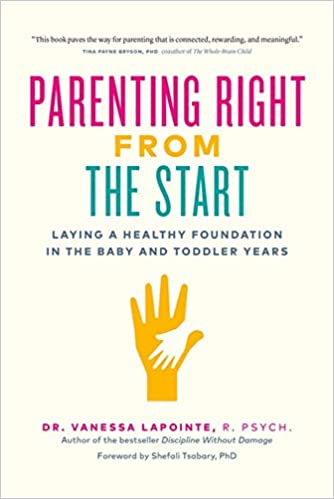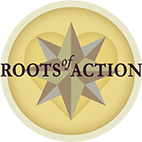
When you become a parent, you often have this idealized notion of how it is going to go. You will fall in love with your baby and your baby will fall in love with you. You will figure out how to help them grow. It will all work out. After all, how hard could raising a human be?
And then, you find yourself buried in the day-to-day reality of raising a child, feeling like you aren’t certain about what you are meant to be doing. In the absence of a sure method, it can quickly become overwhelming to find your way forward. So, you lapse into the parenting methods that are the go-to strategies of the day given the dominant pop culture of child-raising.
The Troubled Dominant Pop Culture of Child-Raising
The pop culture of child-raising often has parents raising humans in ways that are no longer supported by the science of child development. This happens because beliefs get subconsciously transferred from one generation to the next of who children really are. Beliefs like those emerging from the “original sin” view of the child that propagated the sense that children are born full of evil and sin and require adult direction to be purged of it. Or like the “blank slate” view of the child which had big people—parents, teachers, caregivers, and other adults responsible for the raising of children—everywhere believing children were hollow vessels waiting to be filled and molded by our guiding hand. Or even the “flowery meadows” view of the child which had big people somewhat neglectfully releasing their children to the proverbial flowery meadows to blossom without interference.
It would likely be hard to find a parent who whole-heartedly espouses any one of these biases present day. And yet, there is evidence of such biases woven throughout the minutiae of day-to-day parenting. We are irritated by the inconvenience of development and want to hurry it up with techniques and strategies. We are frustrated when children don’t respond as we think they should. We set consequences and punish children to get them to fall into line. Well-intentioned all of it, but also antiquated and out of touch with the science—and heart—of raising a human.
Beyond biases and the dominant pop culture, pressure on parents today is driven by a misguided twisting of developmental science to suit the needs of the time-starved, outcome-focused modern world. We don’t have time for development to play out naturally, so we try to hurry it along. We seek experts who can crack the code and give us tricks and strategies to this end. We fret about university acceptance and life success almost from a child’s first breath. As a result, we hyper-schedule our children’s lives with enrollment in every possible enriching extracurricular activity to make sure our kids are in the running. We forget that nature has a brilliant plan for raising a human that will have our children in the lead by a long shot.
Attachment as the Foundation
As a parent, it is so difficult to know how to approach the growing up of our children. And yet, there have been so many developments in terms of understanding the science of child development, including the essential role of the parent-child relationship. What is very clear from this science is that successfully raising a human cannot be made to bend and yield to cultural bias and environment demands. Rather, child development needs to be protected from these invasions. It needs to be championed as a spectacular force of nature, with our role as adults being to ultimately create the conditions conducive to growth for each individual child.
The most significant of these conditions is what developmental scientists refer to as “attachment.” Attachment is the relationship between a child and their important big people, most notably their parents. The attachment relationship is unique to each parent-child duo. And now with almost a century of work culminating in evidence made possible by recent advances in neuroimaging and science, it is clear that this relationship literally drives the neural architecture of the developing brain and is key to raising a human, from infancy to adulthood. Longitudinal data reveal further that the attachment relationship and its impact on brain development has significant predictive capacity for everything from physical health to mental health, school and occupational success, and one’s capacity for engaging in deep and meaningful relationships with others.
In short, a healthy attachment relationship is foundational and essential to healthy child development. So much so that the United Nations Declaration of the Rights of the Child includes as one of its first principles that all children everywhere have the right to love. Research using animal models has shown that children seek attachment even over food, punctuating that a healthy, well-functioning parent-child relationship is a basic and profound necessity for the growing child.
Attachment is the loving relationship you have with your child. In my article, How Do You Teach a Child to Show Love?, you’ll see that the answer is straightforward: Children are not taught love through a series of scripted actions or requests. To see love coming out of a child requires that he or she was first filled up to overflowing through the experience of being loved by a parent or caregiver.
Embracing the Heart and Science of Raising a Human
Standard parenting practices often fly in the face of a child’s need for attachment, and even play that need against the child. Largely accepted discipline practices, including time outs, have the child facing relational disconnection rather than attachment as a means of controlling behavior. Conventional sleep training approaches advise leaving an infant to cry as a means of controlling sleep patterns. And a broader celebration of independence–even though it is a forced façade–instead of nurturing deep dependence, drives the thought patterns of the day. Mantras like “You should not do for a child what they can and should do for themselves” have parents divorcing themselves from a focus on the whole truth of who children actually are in the name of attempting to sculpt children into who we think they should be.
However, if we parent with heart and embrace and honor the relational needs of the growing child, we give our kids the best possible chance at growing in exactly the manner that nature intended. And it is never too late to get started on that! When you do, magic happens. Development flows and kids get to become the most amazing version of themselves. The attachment relationship creates a developmental experience of emotional rest for the child. From here, the child gets to really emerge. Creativity and curiosity are fostered. Independence, resilience, and self-awareness become natural fruits. And the capacity to exist in relationship with others, to be deeply fed and replenished by empathy, and to contribute to those relationships in meaningful ways with joyful, social spirit all become possible.
This is the power of attachment. And this is the science, and heart, of what it takes to raise a human being.
Editor’s Recommendation
 At Roots of Action, we focus on child and adolescent development during the K-12 years. I felt Dr. Vanessa Lapointe’s new book, Parenting Right From the Start, is such an important contribution to the literature on the baby and toddler years that I wanted to share it with our readers. Attachment relationships in those early years is key to growing healthy kids throughout the school years. Attachment is always at the heart of the work of child development, at any age. Please read or recommend this book to new parents! — Dr. Marilyn Price-Mitchell, founder, Roots of Action
At Roots of Action, we focus on child and adolescent development during the K-12 years. I felt Dr. Vanessa Lapointe’s new book, Parenting Right From the Start, is such an important contribution to the literature on the baby and toddler years that I wanted to share it with our readers. Attachment relationships in those early years is key to growing healthy kids throughout the school years. Attachment is always at the heart of the work of child development, at any age. Please read or recommend this book to new parents! — Dr. Marilyn Price-Mitchell, founder, Roots of Action
Published: October 10, 2019
Tags: attachment relationships


